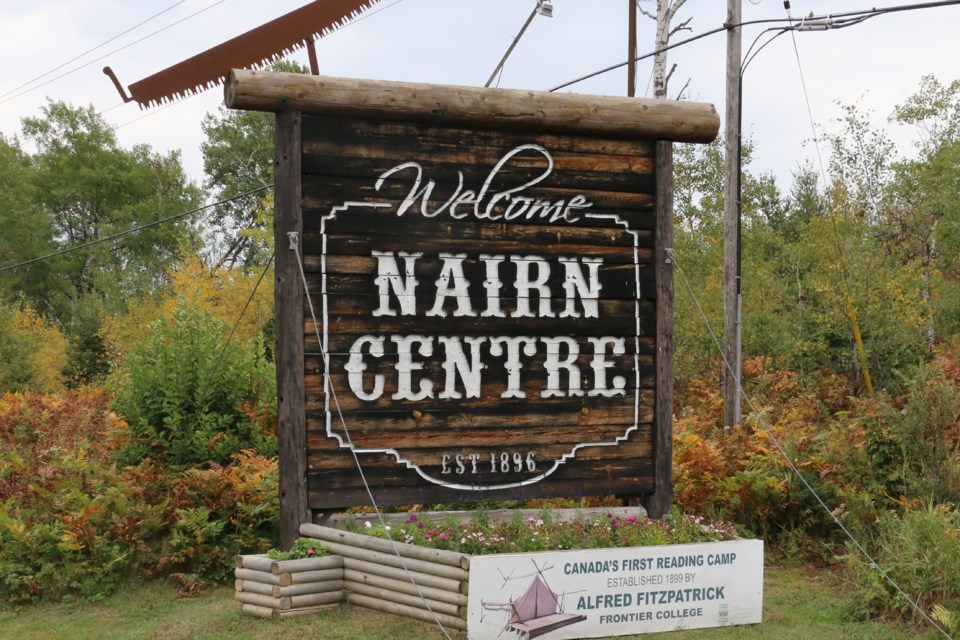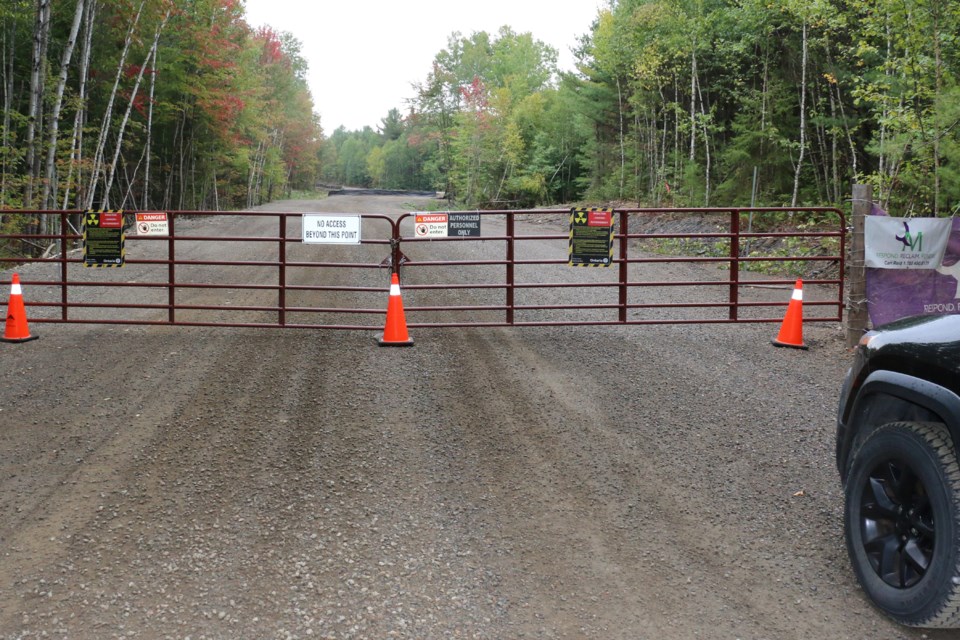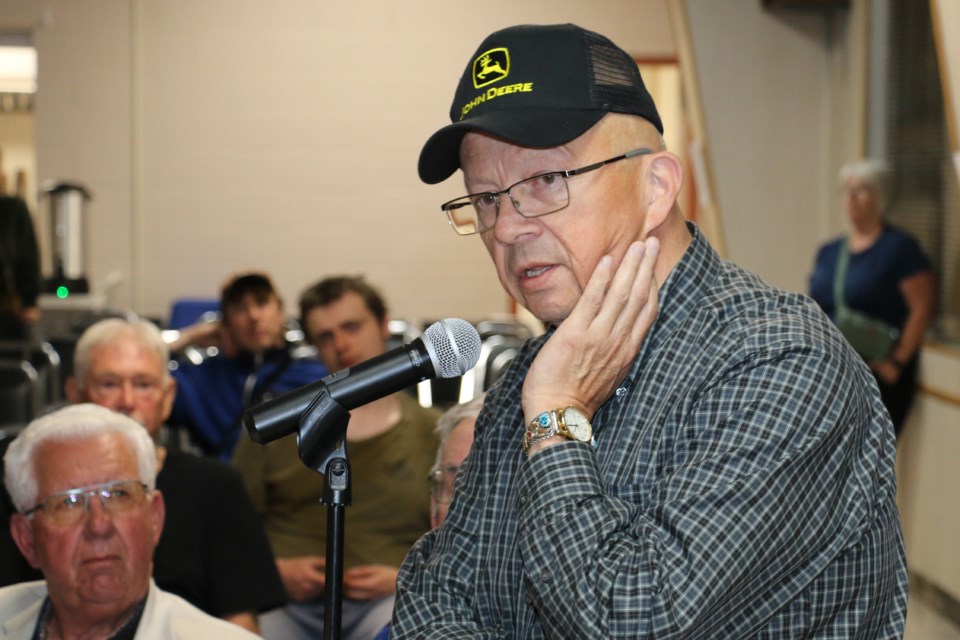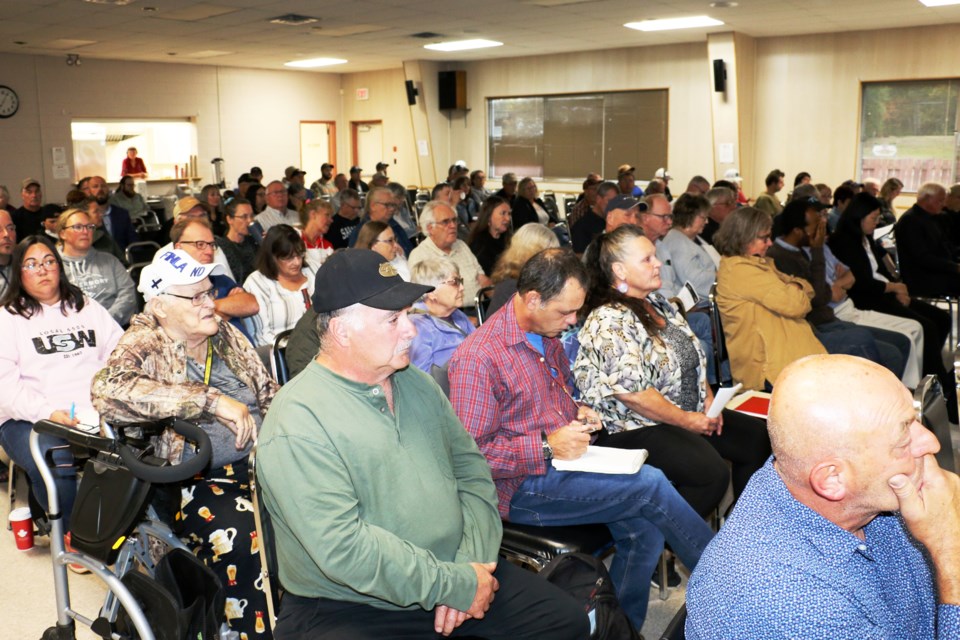The plan to dump naturally occurring radioactive material, along with backfill and tailings, near Nairn Centre ran into some roadblocks Sept. 12 at a town hall meeting in that community.
Scores of residents from Nairn and Hyman Townships and nearby Baldwin Township packed into the community hall in the small Highway 17 community west of Sudbury to hear details of a cleanup project that began nearly 10 years ago.
Toward the end of the meeting, many residents expressed displeasure with the idea. The idea was also opposed by two First Nations leaders who attended the meeting.

The plan is to truck 34,000 tonnes of old processed niobium tailings from Nipissing First Nation to the Agnew Lake Tailings Management Area, located about 15 kilometres north of Nairn Centre.
Although the plan has been in the works for nearly a decade, the details were not provided to the general public until a couple of months ago. This resulted in a wave of concern from community leaders around Nairn Centre, and more specifically among cottage and camp owners at Agnew Lake.
The connection is this was the site of the Agnew Lake uranium mine that operated in the 1960s and 1970s before it was closed. The property and the uranium tailings site was "inherited" by the Ontario Ministry of Northern Development and Mines (MNDM) in the 1990s.
When plans were made for Nipissing First Nation to rid itself of niobium tailings, the decision by the Ontario government was to haul the material to Agnew Lake, and place the niobium tailings atop of the uranium tailings. The haulage plan was supposed to be taking place this fall.
It appears the project is on hold until community leaders can get more information, but no officials at the meeting provided a firm answer as to a timeline and said they would provide more information to the community prior to proceeding.
The materials at Nipissing First Nation are from a former niobium mine — the Beaucage Mine — that existed in the 1950s on an island in Lake Nipissing. The ore was processed at a mining plant on the nearby reserve, just west of North Bay.
Darren Stephenson, a manager with the Ontario Ministry of Transportation (MTO), said the cleanup project will see the excavation of the old niobium tailing materials along with dirt and gravel backfill material. The material will be hauled on a route of roughly 160 kilometres along Highway 17, then to Sudbury Regional Road No. 4, Road No. 5, to Fairbank Lake Road, to High Falls Road, and then onto Agnew Lake Road to the tailing site.
Stephenson said there are 34,000 tonnes of material to be hauled and MTO has contracted 16 tri-axle heavy trucks for the job. He said it could be up to 24 truck trips a day, depending on how busy the route is.
"We anticipate that each truck will only be able to make one trip, and some that leave first thing in the morning may be able to make two, so we've got 16 trucks. We're indicating about 24 loads a day may be hauled. And that's simply because we think half of the trucks may be able to make two trips in a day, and others that are making their first trip later in the day will not have time to get to and from and back."

He emphasized that the hauling has not begun and, at this point, there is no set date for the hauling while the issue is still being discussed and debated at the municipal level.
Stephenson said the truck drivers will be wearing disposable coveralls that will be changed every day, along with face masks.
"So the masks are intended for respiratory reasons, because we're worried about transport and it becoming airborne. People that are in direct contact with it on the work sites will be wearing this equipment every day, and the whole intent of that is that they're not transporting this home or on their own clothes, and they're not respiring it," he told the town hall gathering.
He added that the haulage trucks containing the niobium material will all be "securely tarped" so that none of the material is distributed along the haul route.
A slide presentation beside Stephenson said all trucks will be "scanned and cleaned" at washing stations at the excavation site.
As to the risk of niobium itself, several speakers indicated that it was negligible.
Ministry of Mines manager Jean Guindon told the audience that while the plan is to install niobium materials on top of the existing uranium tailings, the two are not the same.
“Now, remember, uranium has a much higher rate of radiation than niobium. Niobium is a low rate of radiation. So in discussions with the Canadian Nuclear Council, we determined that the (niobium) material that they're going to bring is within the licence agreement, so it's designed, it's maintained, and it's within that nuclear licence that we hold, and they agreed that this material would be acceptable to be used as a cover material,” said Guindon.
The various head table speakers took up more than an hour explaining details and concerns of the project, which was followed by an open mic session where community members were invited to comment or ask questions.
One of those who addressed the head table was Chief Rodney Nahwegahbow of the Whitefish River First Nation, who told the gathering that Nairn Centre was "in the heart of our traditional territory."
Nahwegahbow said the plan to dispose of the niobium materials was not shared with him or his First Nation.

“I, for one, was kind of blindsided by this. Only recently have I learned of this disposal of the niobium to this location,” he said.
"So although our First Nation partners to the east and to the west may have been aware of this, you're in the heart of our territory. And as a representative leader for Whitefish River First Nation, I do not consent to this delivery of radioactive material waste product to this location," said Nahwegahbow. His comment was met with several seconds of applause from the crowd.
Nahwegahbow's statement followed earlier comments that MTO had consulted with several Indigenous groups that included Nipissing First Nation, Atikameksheng Anishnawbek First Nation, Sagamok Anishnawbek First Nation and Serpent River First Nation.
Nahwegahbow said he had consulted with his lands department prior to attending the meeting to find out what information was provided to his community. He said he was aware the tailings management site would need a licence renewal in 2025, but other than that, there was no communication or consultation. He said his concern is not only for the people currently living at Whitefish River, but also for the next seven generations of people who live there.
Also speaking to the panel was Chief Patsy Corbiere of the Aundeck Omni Kaning First Nation who also expressed displeasure at what she said was the lack of proper consultation.
Corbiere said none of the chiefs of other First Nations was talking about the project and she wondered why no information was forthcoming.
"I want an answer to that, because I will be talking to these chiefs. We just had a session in Lively for three days in regards to what projects are going on. And it went around a circle, and not one of those four First Nations mentioned this project, which is very concerning," said Corbiere.
As several other community members addressed the head table, it was decided that since it was past 10 p.m. there would not be enough time to directly answer all the questions. It was decided that many of the questions could be answered by follow-up emails.
As the meeting was wrapping up, one of the ministry of transportation delegates was asked what the deadline was for shipping the niobium.
There is no deadline, he said.
Len Gillis covers mining and health care for Sudbury.com.




